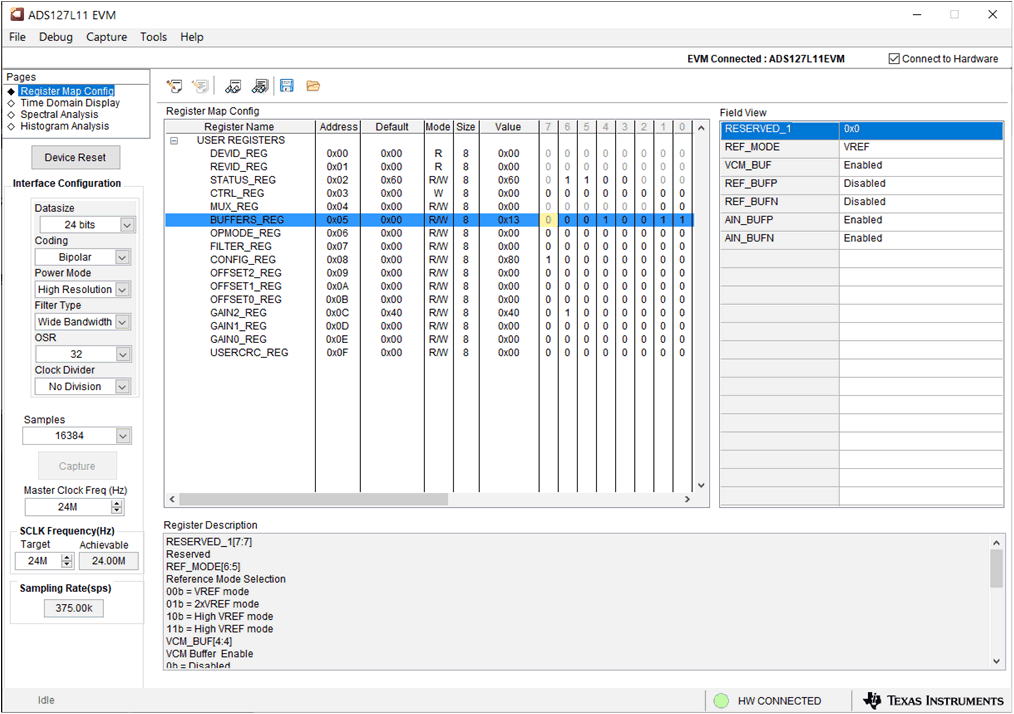SBAU351 April 2021
6.3 EVM GUI Global Settings for ADC Control
Figure 6-4 shows that the EVM global controls are located on the left-hand side of the GUI. These controls include the number of samples, master clock frequency, SCLK frequency, sampling rate, and others. In the upper left-hand side of the GUI is the Pages control that allows access to the other key pages in the GUI. Figure 6-4 also shows the ADC register settings. The registers can be used to set the different device modes such as filter settings and power settings.
 Figure 6-4 EVM GUI Global Settings for ADC Control
Figure 6-4 EVM GUI Global Settings for ADC Control